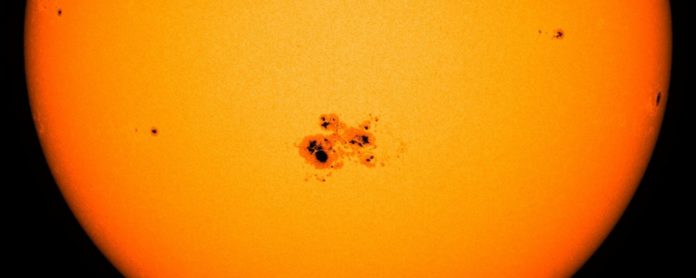Researchers at CU Boulder have developed a computer simulation of the sun’s interior and discovered the hints that the Sun may have a dual personality.
Using simulations, researchers wanted to capture inner roiling turmoil of the star. While doing so, they spotted something unusual: On rare occasions, the sun’s internal dynamics may jolt out of their normal routines and switch to an alternate state.
Physicists Loren Matilsky said, “The existence of such a solar alter-ego could provide physicists with new clues to the processes that govern the sun’s internal clock—a cycle in which the sun switches from periods of high activity to low activity about once every 11 years.”
“We don’t know what is setting the cycle period for the sun or why some cycles are more violent than others. Our ultimate goal is to map what we’re seeing in the model to the sun’s surface so that we can then make predictions.”

Researchers carefully observed the phenomenon called solar dynamo, essentially a concentration of the star’s magnetic energy. This dynamo is formed by the spinning and twisting of the hot gases inside the sun and can have big impacts—an especially active solar dynamo can generate large numbers of sunspots and solar flares or globs of energy that blast out from the surface.
But, studying the dynamo is quite challenging because of its formation in the sun’s interior, far out of range of most scientific instruments.
Scientists examined the activity in the outer third of that interior, which scientists liken to “a spherical pot of boiling water.” Their model delivered fascinating outcomes: They found that the solar dynamo formed to the north and south of the sun’s equator. Following a regular cycle, that dynamo moved toward the equator and stopped, then reset in close agreement with actual observations of the sun.
But that regular churn wasn’t the whole picture. Roughly twice every 100 years, the simulated sun did something different. In those strange cases, the solar dynamo didn’t follow that same cycle but, instead, clustered in one hemisphere over the other.
Matilsky said, “That additional dynamo cycle would kind of wonder. It would stay in one hemisphere over a few cycles, then move into the other one. Eventually, the solar dynamo would return to its original state.”
“That pattern could be a fluke of the model, but it might also point to real, and previously unknown, the behavior of the solar dynamo. Astronomers have, on rare occasions, seen sunspots congregating in one hemisphere of the sun more than the other, an observation that matches the CU Boulder team’s findings.”
“The group will need to develop its model further to see if the dual dynamo pans out. But the team’s results could, one day, help to explain the cause of the peaks and dips in the sun’s activity—patterns that have huge implications for climate and technological societies on Earth.”
